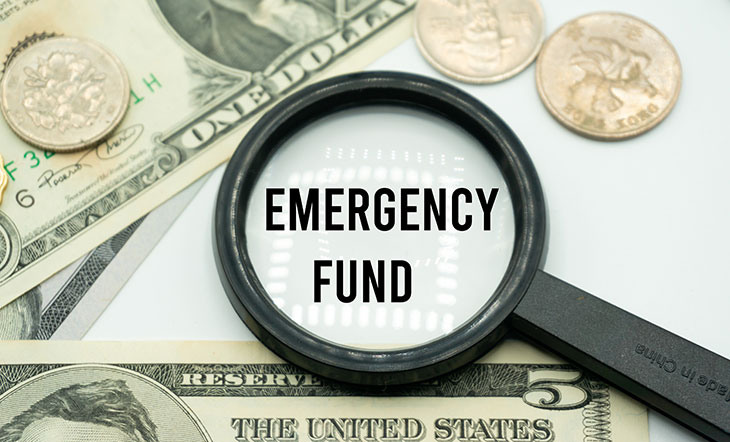
Life can throw some unexpected curveballs our way. Whether it’s a surprise car repair, an unexpected medical bill, or even a job loss, having an emergency fund can be a game-changer. Think of it as a financial cushion that keeps you steady when life tries to knock you down. Here’s why an emergency fund is a must and how to start building one today.
Why You Need an Emergency Fund
An emergency fund is money you set aside for those unplanned events that can pop up at any time. This isn't the money you save for a vacation or a new gadget—this is your safety net for real emergencies, so you don’t have to rely on credit cards or loans to cover those unexpected expenses.
Why It Matters:
- It Keeps You Out of Debt: No longer will you rely on credit cards or loans for unexpected expenses, avoiding high-interest debt.
- It Reduces Stress: Having a backup plan means peace of mind. Knowing you have cash to handle an emergency makes life less stressful.
- It Gives You Options: When something major happens—whether it’s a medical issue, a home repair, or a job loss—you’ll have the flexibility to deal with it without scrambling for money.
How Much Should You Save?
Financial experts generally recommend setting aside three to six months' worth of living expenses for your emergency fund. But how do you figure out your target?
Step 1: Calculate Your Essential Monthly Expenses
- Rent or mortgage payments
- Utilities (electricity, water, internet, etc.)
- Groceries
- Transportation costs (gas, car payments, public transit)
- Insurance premiums
- Minimum debt payments
Step 2: Set Your Emergency Fund Goal
Take your monthly expenses and multiply them by three to six months. This gives you a solid target for how much you need to save.
Example: If your basic monthly expenses are $2,000, aim for an emergency fund between $6,000 and $12,000.
How to Build Your Emergency Fund
Starting an emergency fund might feel overwhelming at first, but the good news is you don’t have to do it all at once. You can break it down into smaller steps to make it more manageable.
1. Start with a Budget
The first step to saving is knowing where your money is going. Track your spending and look for places to cut back.
- Track Your Spending: Use an app or spreadsheet to keep track of where your money goes each month.
- Find Savings Opportunities: Cut back on things like unused subscriptions, dining out less, or reducing recurring costs.
2. Set Up Automatic Transfers
To make saving easier, set up automatic transfers from your checking account to a separate savings account. Treat it like a bill you owe yourself.
3. Use a High-Yield Savings Account
Keep your emergency fund in a high-yield savings account so it can grow while remaining easily accessible. Avoid risky investments for this money—it’s meant to be used in emergencies, not for making big returns.
4. Start Small and Work Your Way Up
If the thought of saving a large amount feels daunting, break it down. Start with a small goal and build from there.
- Save $500 first.
- Then, aim for $1,000 once you hit your $500 milestone.
- As your financial situation improves, increase your contributions.
Tip: Saving just $50 a week can add up to $2,600 in a year.
5. Replenish Your Fund if You Use It
If you dip into your emergency fund, make it a priority to replenish it right away. It’s important to keep that cushion available for when you truly need it.
When to Use Your Emergency Fund
An emergency fund is for emergencies—things that are necessary, not things you want. Here’s a quick guide on when to use it:
Appropriate Uses:
- Medical Emergencies: Unexpected hospital visits, surgeries, or urgent treatments.
- Urgent Car or Home Repairs: Fixing a broken furnace, repairing a leaking roof, or dealing with a car breakdown.
- Job Loss or Income Reduction: Covering your living expenses while you look for a new job.
- Family Emergencies: Unexpected travel or support during a family crisis.
Inappropriate Uses:
- Vacations
- Buying gadgets or luxury items
- Weddings or home improvements (these should be planned for ahead of time)
- Investment opportunities (remember, this money is low-risk and needs to be easily accessible)
Staying Motivated
Saving for an emergency fund takes consistency and patience. Here are a few tips to keep you on track:
- Track Your Progress: Keep an eye on how your savings are growing, either through an app or a visual chart.
- Celebrate Milestones: When you hit a savings goal, reward yourself with a small treat.
- Remember the Benefits: Keep in mind the peace of mind and financial security your emergency fund provides.
Closing Remarks
Building an emergency fund is more than just stashing money away—it’s about giving yourself the security and peace of mind to handle life’s unpredictability. With a solid safety net, you can weather life’s storms without derailing your long-term financial goals.
Start small if you have to, but the key is to start today. Your future self will thank you for it.